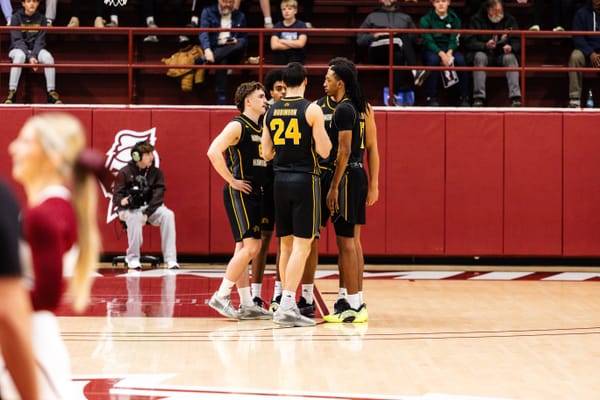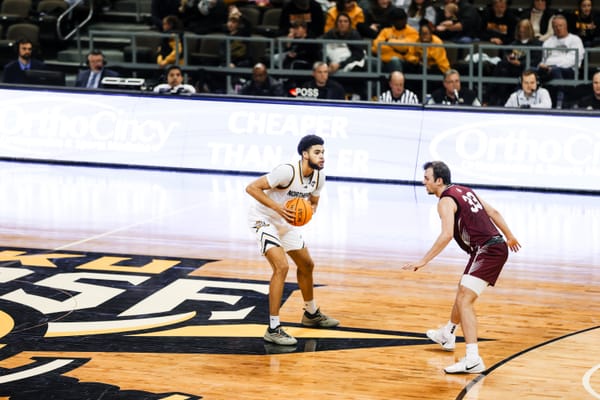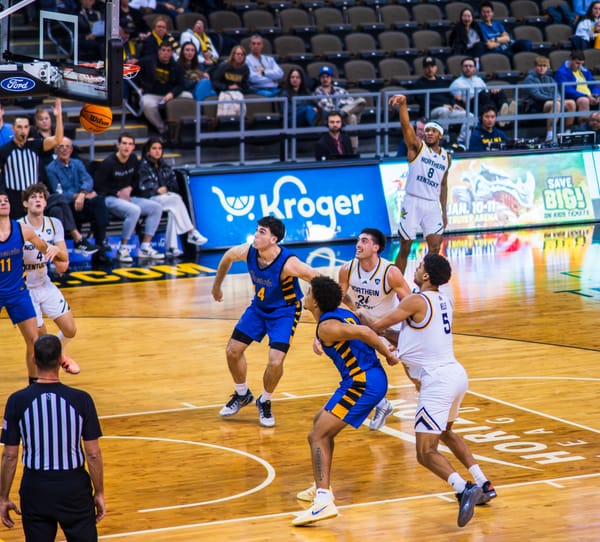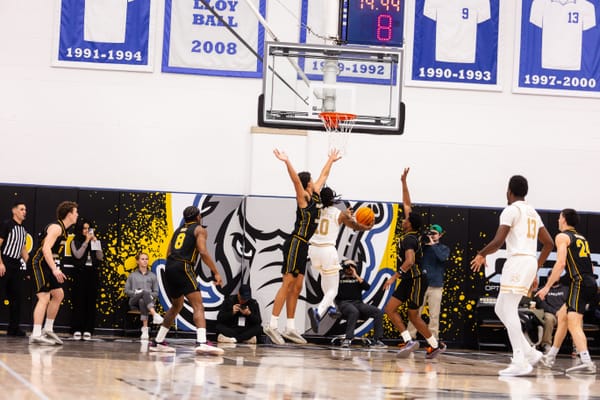Inside the Norse Portal Plan: Simon McCormack Talks Scouting, Fit, and Efficiency
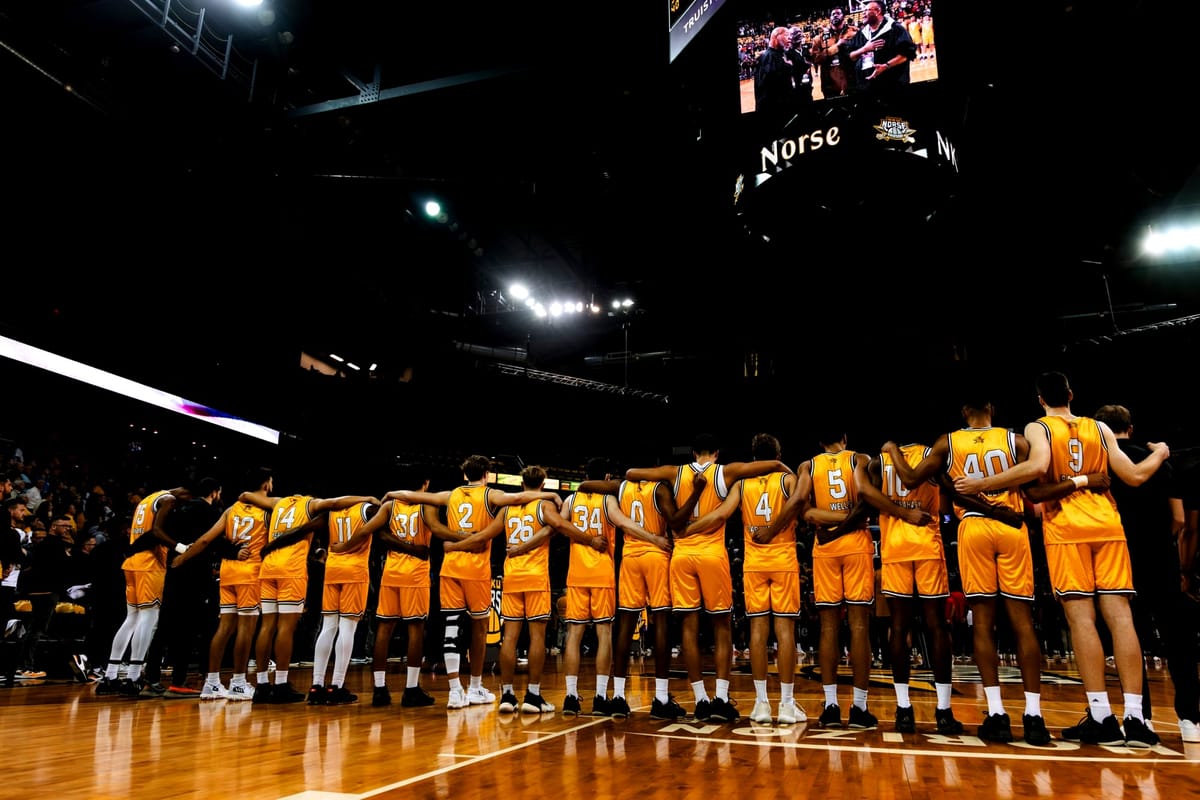
In today’s college basketball landscape, building a roster has become a year-to-year operation. The days of stockpiling freshmen are largely gone. Patiently developing players over multiple seasons, especially at the mid-major level, is no longer the norm. Northern Kentucky’s latest additions from the transfer portal show that the Norse have adapted.
Darrin Horn and his staff added two more experienced, productive transfers this week in Georgetown College guard Tae Dozier and Montana State Billings forward Kael Robinson. They join a growing list of lower-division transfers that NKU has pulled up in recent years — including Xavier Rhodes, Michael Bradley, Josh Dilling, and Dan Gherezgher, who announced earlier this offseason that he will return to NKU for another season.
With rosters turning over every spring, the Norse have made it a priority to find players who have already proven themselves in college basketball — even if it’s at the NAIA or Division II level.
The reality of that turnover is staggering: All 15 of the Horizon League’s All-League selections from last season have either graduated or transferred. That kind of churn makes long-term roster building nearly impossible — and programs like NKU are adapting accordingly.
“I heard a stat that 53% of the scoring this year in the NCAA Tournament was by transfers, so obviously it’s a huge part of the game now,” NKU assistant coach Simon McCormack said.
McCormack noted that the stigma of players moving up a level has all but disappeared in this era.
“I think the ‘transferring levels’ is not as big of a deal because it has become so common in our sport,” McCormack said. “If you look at high-major rosters, so many of them have multiple transfers from the mid-major level. Florida, for example, has transfers from Iona, Marshall, Chattanooga, Belmont, FAU."
“Us recruiting NAIA/D2 transfers is very similar to what high majors are doing with recruiting mid-major transfers. These players have been part of winning programs, played a ton of game minutes, and have been highly productive and efficient college players. There is less of an ‘unknown’ with their production.”
Dozier fits that profile. The 6'5 guard from Louisville averaged 11.5 points, 6.6 rebounds, 3.1 assists, 1.7 steals, and 1.5 blocks per game this past season at NAIA power Georgetown College. He shot 59.3% from the field, 35.7% from 3-point range, and 85.7% at the free-throw line, earning Third Team NAIA All-American honors while helping lead the Tigers to a 29-5 record and a trip to the NAIA National Championship Quarterfinals.
The offensive efficiency speaks for itself, but Tae is capable at scoring in more unconventional ways. He scored 122 of his 379 total points this past season in transition, where he would get lobs thrown up to him or take the ball down the court himself and score around defenders. Tae is primarily a catch-and-shoot player around the perimeter, but is a willing crasher on the offensive boards. He is rarely going to take a defender off the bounce from the perimeter in the half court, but when he does he usually gets to a mid-range shot and not all the way to the rim.
Dozier was also a great defender for Georgetown College. He held opponents to just 27.3% from the field and his season-high for points allowed in a game was just 11. This is in a conference that has seven teams that averaged 82.1 points per game last season, compared to the Horizon League where teams averaged 74.3 points per game in 2024-25.
Robinson, a 6'7 forward from Hamilton, New Zealand, averaged 17.4 points, 6.9 rebounds, 2.7 assists, and 1.1 blocks per game at Montana State Billings (D2), leading the GNAC in total points while earning First Team All-Conference honors. He scored 1,600 points across four collegiate seasons split between MSUB and Rocky Mountain College (NAIA).
Kael could potentially fill the offensive void left by Trey Robinson’s departure. Both Trey and Kael are 6'7 and as we saw last season with Trey, you can be very effective scoring in the post at that size. Kael also brings to the table more of a 3 point shooting element.
The biggest difference between the two players right now is that Kael is not at the same level defensively as Trey was. It is not simple to do a one-to-one comparison between the Horizon League and the GNAC, but Trey Robinson held opposing players to just 35.5% from the field this past season compared to Kael Robinson's 42.1%. Kael will have a full offseason to make a jump defensively, but has the opportunity to be a great fit for the Norse on offense.
Kael was used all over the court for the Billings offense. He likes post-ups, spot-up jumpers, along with being a weapon in transition or isolation. Robinson was not limited in his role offensively and that allowed him to be effective for MSUB. He also has no problem taking opponents off the dribble from the perimeter, but is primarily going to drive left (73.1% of the time), despite being a right handed shooter and wanting to score with his right hand around the rim. One of his go-to moves is driving into the paint with his left hand. If cut off, he’ll spin away from the defender and finish with his right. You can see the move I am talking about in back-to-back clips in Kael's Senior Year highlight reel at the 1:50 time mark in the video below:
Both players bring length, versatility, and multi-positional skill sets that fit NKU’s style of play.
McCormack said there's no secret to finding "diamonds in the rough" at the lower level. The NKU staff works their connections hard and talk with coaches around the country. They also spend a lot of time browsing the transfer portal and quickly devouring film on as many targets as possible.
“Most important thing is finding fit and that is based off watching film and projecting how they would fit in our system on both sides of the ball.”
The addition of Dozier and Robinson comes on the heels of NKU’s earlier pickup of Barton College (D2) guard Shawn Nelson — another experienced, productive scorer who averaged 18.9 points per game last season.
McCormack pointed to programs like UC San Diego, Drake, and Charleston under Pat Kelsey as other examples of Division I teams having success by pulling up Division II talent.
NKU has found its formula — and it’s one rooted in the current reality of college basketball.
“We feel comfortable based on our track record these guys can work,” McCormack said.
Portal News
In a surprising turn, Hubertas Pivorius has entered the transfer portal, just weeks after what appeared to be a retiring from basketball.
Northern Kentucky G Hubertas Pivorius has entered the transfer portal. Grad transfer. https://t.co/O0V6AkYEhW
— Verbal Commits (@VerbalCommits) April 7, 2025


